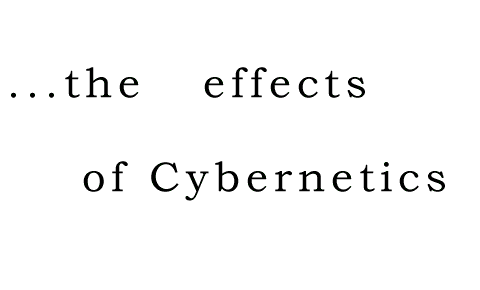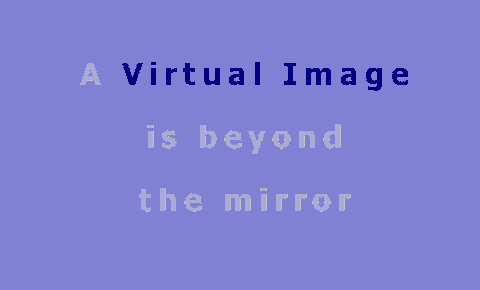|
PLAN works in a combination of three phases |
|
PLAN works in a combination of three phases |
|
There is a modern project for reflecting together the sciences of mind and
matter.
From the ancient Hermetic way of thinking it was already known that |
This page emphasizes the Phoenix Mechanism which analytically follows PLAN's circling extraction
ANATOMY
![]() Two
terms (plus one relation) are identified in
PLAN - A group is organized around
1) an Ideal, ideology, an idea and/or leader that its members
share in common - and it operates on 2) an object, topic,
product.
Two
terms (plus one relation) are identified in
PLAN - A group is organized around
1) an Ideal, ideology, an idea and/or leader that its members
share in common - and it operates on 2) an object, topic,
product.
![]() Whenever the
object of the group is actualized, his model (pattern, system,
Significand, etc...) which is ruled by an Ideal, is applied
in response (for example, the group needs food thus it launches a hunt, or
migrates or cultivates etc.... according to its pattern,
AKA Ideal).
Whenever the
object of the group is actualized, his model (pattern, system,
Significand, etc...) which is ruled by an Ideal, is applied
in response (for example, the group needs food thus it launches a hunt, or
migrates or cultivates etc.... according to its pattern,
AKA Ideal).
![]() In other words,
the identity of a group is defined by its Ideal - this Ideal corresponding
with an object (thirdly the individuals members - relation
- animate the Ideal).
In other words,
the identity of a group is defined by its Ideal - this Ideal corresponding
with an object (thirdly the individuals members - relation
- animate the Ideal).
PHYSIOLOGY
![]() An
Ideal does not tend to change or evolve - but the group
produces effects on its environment, hence on its object. The object
can also be transformed by other external causes than the group.
At a certain point the object begins to differ so that it is implies for
the Ideal to be modified
An
Ideal does not tend to change or evolve - but the group
produces effects on its environment, hence on its object. The object
can also be transformed by other external causes than the group.
At a certain point the object begins to differ so that it is implies for
the Ideal to be modified
![]() .
.
![]() Minor and usual
changes in the object are easy to address in term of repetition in an
Idealization since they are related in a feed-back loop and there are little
inadequation between the two modified terms. However, in some case and especially
when Cybernetic laws intensify the primary level of feed-back, unpredictable
and weird objectivation occurs. No known idealization can match these unknown
cases; consequently they are denied or else the group dissolves, or thirdly
it react with an inhibition which gradually induces its decline; a fourth
possibility is in changing the Ideal but this is meaning a change of identity.
This latter possibility is generically opposed by every each laws of homeostasy
in the endangered organization where it can be called a catastrophe.
Minor and usual
changes in the object are easy to address in term of repetition in an
Idealization since they are related in a feed-back loop and there are little
inadequation between the two modified terms. However, in some case and especially
when Cybernetic laws intensify the primary level of feed-back, unpredictable
and weird objectivation occurs. No known idealization can match these unknown
cases; consequently they are denied or else the group dissolves, or thirdly
it react with an inhibition which gradually induces its decline; a fourth
possibility is in changing the Ideal but this is meaning a change of identity.
This latter possibility is generically opposed by every each laws of homeostasy
in the endangered organization where it can be called a catastrophe.
![]() Such
catastrophe is what the intervention circle of
PLAN witness and address.
Many groups and societies maintain a regime of repetition while their Ideal
is actually obsolete in regards to their object A state of chaos is therefore
hidden under a layer of declining rules, until degeneration and/or
catastrophe.
Such
catastrophe is what the intervention circle of
PLAN witness and address.
Many groups and societies maintain a regime of repetition while their Ideal
is actually obsolete in regards to their object A state of chaos is therefore
hidden under a layer of declining rules, until degeneration and/or
catastrophe.
THE PHOENIX MECHANISM
![]() When a radical
change of idealization (catastrophe) is caused in a Cybernetic system, the
localization where it occurs reveals a state of Chaos.
When a radical
change of idealization (catastrophe) is caused in a Cybernetic system, the
localization where it occurs reveals a state of Chaos.
![]() In the simple
case of a consecutive extinction, the entity's vestige is reabsorbed into
the environment, or it is sub-divided and integrated in new idealizations;
yet with Cybernetics 'ultimate' objects (expl. ultimate waste) may emerge,
thus giving an opportunity for a pure creation (ex-nihilo).
In the simple
case of a consecutive extinction, the entity's vestige is reabsorbed into
the environment, or it is sub-divided and integrated in new idealizations;
yet with Cybernetics 'ultimate' objects (expl. ultimate waste) may emerge,
thus giving an opportunity for a pure creation (ex-nihilo).
![]() The case of
creation is rare and abstruse. Beyond the annihilation in Chaos, a Phoenix
can emerge with a new identity; for this, by force logic, it must be fed
by the so-called weird object which seemed to have caused its death. This
doubled stimulation (destructive and constructive) by the cause of death
and rebirth is traditionally repulsed as a situation of horror and
opportunity for monstrosity - however, it operates positively, as a 'Phoenix
Mechanism' under the condition of an appropriate setting. Such disposition
is known for a long time in human history, attributed to a seer, namely Simonides
of Chaos. It is generically called The Art of Memory. Under its modern version
which specifically addresses the Cybernetic physiology, it is
PLAN.
The case of
creation is rare and abstruse. Beyond the annihilation in Chaos, a Phoenix
can emerge with a new identity; for this, by force logic, it must be fed
by the so-called weird object which seemed to have caused its death. This
doubled stimulation (destructive and constructive) by the cause of death
and rebirth is traditionally repulsed as a situation of horror and
opportunity for monstrosity - however, it operates positively, as a 'Phoenix
Mechanism' under the condition of an appropriate setting. Such disposition
is known for a long time in human history, attributed to a seer, namely Simonides
of Chaos. It is generically called The Art of Memory. Under its modern version
which specifically addresses the Cybernetic physiology, it is
PLAN.
![]() PLAN
analyses the pure 'plural' which remains under the state
of chaos after the de-idealization and its resulting loss of unity. In its
sustenance of an idiosyncrasy within the chaotic object it allows a diachronic
(
PLAN
analyses the pure 'plural' which remains under the state
of chaos after the de-idealization and its resulting loss of unity. In its
sustenance of an idiosyncrasy within the chaotic object it allows a diachronic
(![]() ) reorganization. Allegorically, it simply feeds the
unorganized mass with a sustained input
) reorganization. Allegorically, it simply feeds the
unorganized mass with a sustained input
![]() and rebuilds a coherent
order for addressing the new situation without loss of memory.
and rebuilds a coherent
order for addressing the new situation without loss of memory.
![]() This can be
illustrated with the Lacanian Optical Model
This can be
illustrated with the Lacanian Optical Model

![]() PIC.10
: This picture illustrates the situation when a 'weird object'
PIC.10
: This picture illustrates the situation when a 'weird object'
(the unfolding flowers which emerge in the real space in front of the
mirror/group)
imposes itself over an Ideal (the dark blue spot which represents the traditional
reference for the group).
As the group crumble, giving place to the underground mass (the mirror turning
horizontal),
a new perspective occurs, which usually confuses the rejuvenating ideal and
the ancient model.
This is usually meaning the death of the group, which remains
as an historical fact (red spot
![]() ) in the real space.
) in the real space.
![]() The
possibility however exists for maintaining the
dissociation
The
possibility however exists for maintaining the
dissociation
between ancient and rejuvenated - this is assumed within the relation
between the analyst and the extracted member in
PLAN
![]() .
.
See
PLAN in
action
There, instead of an historical residue (red spot), the re-entering
member
![]() makes,
makes,
an active entity re-integrating the group in chaos.
Under the mode of an insistent series
![]() ,
,
it eventually restores the 'Phoenix'.
NOTE 10 : The modification of an Ideal means a modification of its system that defines in physics as non-markovian. As long as an Ideal is sustained psychosociology describe a system of Repetition which seems to correspond with the Markov Laws in physics. Only a system which is non-markovian may express memory and history <back to text>
NOTE 20 : 'Diachrony' is a word used in the sciences of the mind, which indicates a temporal relationship in comparison with a spatial one, which is commonly known as Synchrony.<back to text>
NOTE 25 : The main factor which gives Lacan's Optical Model its characteristic is based on a well known trick of Optics - e.g. the apparition in a concave mirror of a 'real image' which results from the condensation of the reflected image of an object (instead of the displacement of a virtual image beyond a plan mirror). Actually this condensed illusion was well known also in Antiquity, when Plato described its occurrence in the cave, yet on the base of a condensation of sound waves; it makes one of the clues of the identity between the Optical Model and the Cave that Plato described in The Republic. An animated picture may help distinguishing from virtual to real images.

PIC.11 : The yellow object when placed in a concave
mirror, is reproduced as a real image (red)
which can only be seen from a certain perspective (pink cone).
In comparison, a virtual image appears beyond a plan mirror and can
be seen
from virtually any place in front of a large enough
mirror.<back to text>
NOTE 30 : The relationship between
an Extracted-Member and the Plural-Analyst is
illustrated in PIC.10 (above), with the meeting
of the yellow and blue spots, before their confusion into a single green
(which represents the residue of chaos under the conclusion of death of the
group, and its memory, red spot). Instead of, and before, this final state
of chaos, if the analytic period (discrimination/dissociation) is sustained
enough, the course of decline may be suspended and modification happens as
in the course of PLAN.
Compare yellow/blue above with caption
in:

![]() <back to
text>
<back to
text>
© CYBEK of New York, 1999.